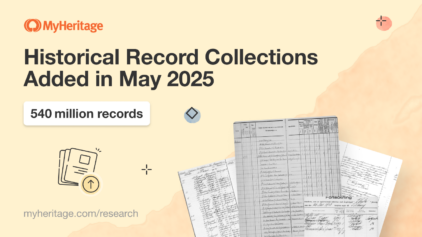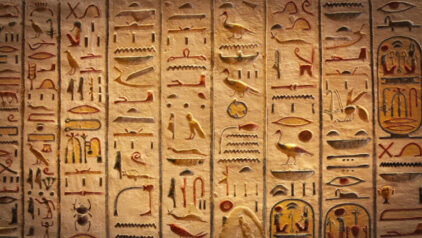How Can Census Records Help Build Your Family Tree?
- By Aíne Lagan ·


Researching your family tree isn’t easy. Whether you’re searching for long-lost relatives or going back just a generation or two, census records are the starting point for any family genealogist. Census records provide crucial demographic data, from the number of inhabitants in a home to each person’s age, gender, occupation, and marital status. Finding a known family member on a census record can help you identify their relatives so you can start building out the branches of your family tree.
With MyHeritage, you get access to 240 census collections with 1.7 billion records from all over the world, making it easier to find the information you need to crack the code to your family history. This how-to guide shares everything you need to know about census records and how to use them for your family tree.
What are Census Records?
Census records are official government documents that provide a snapshot of the current population. These records are collected at regular intervals, usually every decade, but every country takes its approach to conducting a census. The census collects important demographic data, such as age, race, occupation, and marital status.
While the Romans famously conducted a five-year census, recalling each man and their family back to their place of birth, the oldest surviving census record comes from the Han Dynasty in the 2nd century.
Flash forward to today and census records give us a look at the population on a specific date, helping to track cultural and demographic changes. The United States Federal Census is a 10-year census mandated by the Constitution with the first census taking place in 1790 and the next census scheduled for 2030.
What Information is Included in Census Records
When researching your family tree, census records are likely the first place you’ll start. These documents provide only written information with no commentary or photos. The specific information collected at each census has varied over time. The 1930 US Census even asked whether families had a radio.
While information from census records may vary, most will include:
- Names of each member of the household
- Place and date of birth
- Language(s) spoken
- If they could read or write
- If they attended school
- Marital status
Older census records typically provide less information, but they can offer vital clues for building your family tree.
How Census Records Can Crack the Code
Are you stuck searching for a relative with a common name? Perhaps you’re looking for other relatives within the same neighborhood or area. Using census records can help you crack the code using information from other public documents, such as marriage certificates or newspaper clippings.
For example, you could use the address provided by a known family member on their marriage certificate and cross-reference it with the census. These census records may have the names of the person’s parents, siblings, or other family members.
How to Search for and Use Census Records
Census records are typically embargoed for a set time before they’re released to the public. In the United States, census data is released 72 years after being collected. The 1950 US Census is the most recent publicly available census and you can search the census for free on MyHeritage.
Here are some tips for how to use census records:
1. Verify their identities
Census information isn’t guaranteed to be correct. Although we now complete the census ourselves, this information was previously gathered by hand and may have been provided by a neighbor. Spelling errors are normal, and information may be transcribed incorrectly if the handwriting is hard to read. Verify the identity of each person to ensure they’re the correct person you’re looking for.
2. Check out the neighborhood
Families typically stay in the same area. Search census records within the neighborhood to see if you can find potential cousins, aunts, or other relatives.
3. Search in chronological order
A timeline is crucial when building your family tree. Start with the most recent census and search backward, tracking any changes in occupation, marital status, or address for each relative to give you a fuller picture.
Build Your Family Tree for Free with Census Records on MyHeritage
Census records are the starting point for uncovering your family genealogy. At MyHeritage, you can search census records and add relatives to your family tree for free. Watch our video guide on how to search U.S. census records on MyHeritage to get started.










